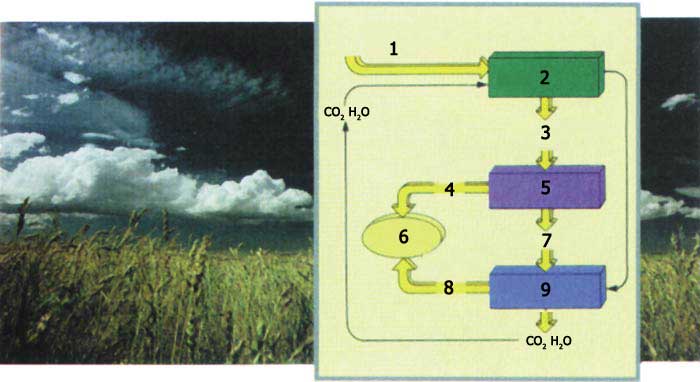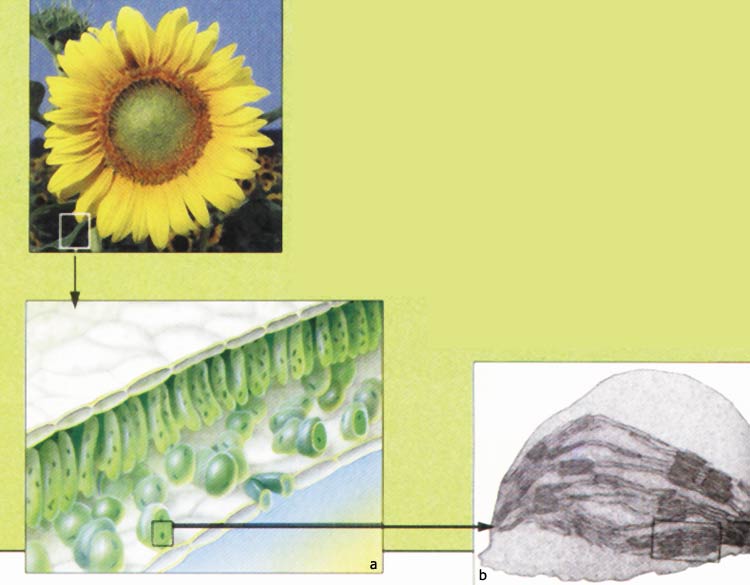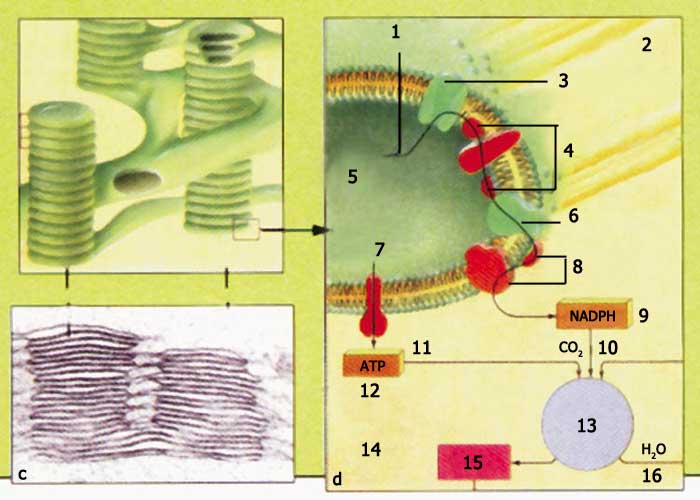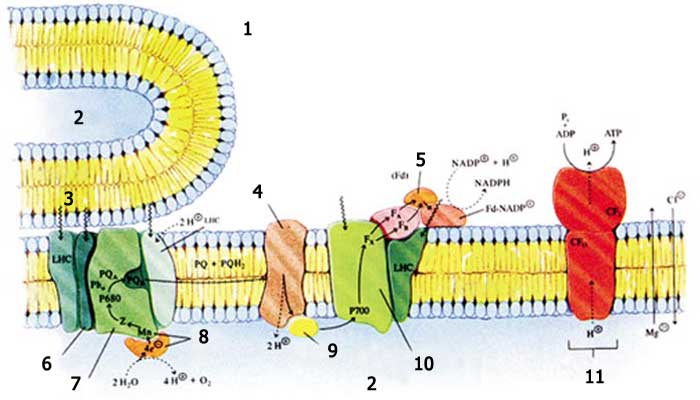Bigotry: The Dark Danger
The Miracle in the Cell

DOWNLOAD THE BOOK
CHAPTERS OF THE BOOK
- Foreword
- Introduction
- Chapter 01. The Tiniest Living Entity
- Chapter 02. The Secret World of DNA
- Chapter 03. Protein Synthesis in The Cell
- Chapter 04. Systems within the Cell
- Chapter 05. Proteins: The Miracle Molecules
- Chapter 06. The Cell Membrane
- Chapter 07. Development in The Mother Womb
- Chapter 08. Energy Production in The Cell
- Chapter 09. Viruses
- Chapter 10. Plant Cell
- Conclusion
< <
12 / total: 13
Chapter 10. Plant Cell
Plants play a huge role in keeping our Earth livable. Plants clean the air that we breathe and moderate our planet's temperature. If plants did not release oxygen into the air we breathe, neither humans nor animals would live for very long. The amount of oxygen in the atmosphere would soon be depleted, and all living things would die of suffocation. A large portion of our nutrients is also derived from plants, which prepare these nutrients from three basic substances: earth, sunlight, and water. In spite of this, each plant species has a particular shape, color, taste and smell unique to it, which hasn't changed for thousands of years. As with all other functions, plants' ability to produce nutrients for themselves, as well as for animals and humans, is a result of the special properties found in their cells. Plant cells have a different structure from humans' and animals' cells, and have been created in such a way as to be the source of nutrients for all living organisms, besides cleaning and refreshing the atmosphere. Even though plant cells seem stationary, there is great activity within. At every second they are absorbing water and other minerals and elements they need from the earth. To these they add the carbon dioxide absorbed from the air and most importantly, energy from the sun to produce nutrients and clean oxygen for animal and human life. This feverish production is carried on within the trillions of tiny cells in the trees that we see every day (See Figure 10.1). The most important property distinguishing plant cells from animal cells is their ability to utilize solar energy. This they do through a process called photosynthesis, converting the energy from the sun into nutrients that animals and humans can use (See Figure 10.2). Energy from the Sun to NutrientsThe Sun is the primary source of energy for life on Earth, though humans and animals cannot use this energy directly. The energy used by our cells is in reality solar energy transferred to us through plants. When we drink tea with sugar, actually we are drinking in energy from the Sun. The bread we eat has a large portion of solar energy. The strength in our muscles is really nothing more than a different form of solar energy. The heat that arises from a burning piece of wood is just transformed solar energy. The energy you use in reading this book again derives from energy from the Sun. The energy source of plants and animals is the same: solar energy, transformed, as mentioned earlier, by photosynthesis. Plant cells convert energy they obtain from sunlight into chemical energy and store it in very special ways in nutrients. Actually, not the whole cell does this, but only the organelles called chloroplasts that give the plant its green color (See Figure 10.3 a,b). These tiny green entities, which we can see only with a microscope, sacrifice their lives to store nutrients and produce oxygen for animal life. These organelles are the only laboratories in the world that can store solar energy in the form of organic matter-the property that makes plants a crucial source of nutrients for animals and humans alike. Every year, the amount of matter produced by chloroplasts comes to about 200 billions tons. This production is actually an extraordinarily complex chemical process that takes place at dizzying speeds. Thousands of chlorophyll molecules found in chloroplasts respond within a thousandth of a second. Because of this speed, many of the reactions that take place in the chlorophyll have still not been observed. The general steps of photosynthesis are understood, but the details are still not completely known because this complex system, which cannot be reproduced chemically, occurs at speeds beyond the comprehension.
Photosynthesis takes place in two phases called the light phase (light-dependent reactions) and the dark phase (light-independent reactions). Light-dependent reactions take place in the so-called thylakoids, small disc-like regions found in the chloroplasts (See Figure 10.3c). Here, the pigment molecules lose an electron as they absorb energy from the sun. As a result of the movement of the electrons, an energy packet is produced as either ATP or NAPDH. In the light-independent reactions, however, carbon dioxide-with the help of the ATP and NAPDH produced at the end of the light-dependent reactions-is converted into energy-giving nutrients like sugar and starch (See Figure 10.3d). This explanation of what actually goes on has been simplified a thousandfold, but is still too complex to understand. In reality, the explanation of reactions that take place during photosynthesis is too long to fit on these pages. No laboratory on Earth is capable of duplicating this energy transformation, carried out in organelles that are thousandths of a millimeter in size. A system placed within the membrane of this organelle, which is a hundred millionth of a millimeter thick, controls the electrons released as a result of energy from the Sun. These electrons are then used in the production of nutrients for animal and human consumption. This perfect system brings the theory of evolution to its knees once again. Because before photosynthesis can take place, all the enzymes and systems need to be found together in the cell at the same time. If even one of these steps is missing, it will render the entire system ineffective. Consequently evolutionist scientists are powerless to explain photosynthesis, just as they are with all of the other chemical mechanisms within the cell. One of these "scientists" Prof. Ali Demirsoy summarizes the hopeless situation into which they have fallen:
On the other hand, another evolutionist scientist, Hoimar von Ditfurth, says that photosynthesis is not a process to be learned later on. He states that all the materials and knowledge required for photosynthesis must have been present in the plant cell from the beginning:
Converting solar energy into electronic or chemical energy is a process that modern technology has only recently been able to carry out. For this, highly technological devices are needed. But a tiny plant cell invisible to the naked eye has been carrying out this conversion consistently, for millions of years. For it to have acquired this ability by "coincidence" is definitely impossible, as the evolutionists admit. Now come the questions thick and fast: Who taught a membrane a hundred millionth of a meter thick to capture an electron and transfer it to other chemical reactions to store energy? How did all of these steps come to be carried out within the cell at the same time? How have green leaves of plants come to be the energy storeroom for all living creatures on Earth? The answer, clearly, is that God has given plants these features. All they are doing is carrying out the duties assigned to them, bowing in submission to the will of God. By His will, all the plants on the face of the Earth produce food and oxygen using water from the earth, minerals and carbon dioxide in the atmosphere. God has made these living organisms the means for His provision. On many occasions, the Qur'an mentions that human beings receive their sustenance from the land and the sky: Humanity! Remember God's blessing to you. Is there any creator other than God providing for you from heaven and earth?... (Qur'an, 35:3)
Footnotes15-Ibid., p. 80. 16-Ditfurth, Im Amfang War Der Wasserstoff, pp. 60-61.
|
||||||||||||||||||||||||
12 / total 13
You can read Harun Yahya's book The Miracle in the Cell online, share it on social networks such as Facebook and Twitter, download it to your computer, use it in your homework and theses, and publish, copy or reproduce it on your own web sites or blogs without paying any copyright fee, so long as you acknowledge this site as the reference.




